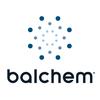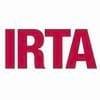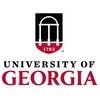Explore all the information on
Calf nutrition
Welcome to the page about Calf nutrition of Engormix; a source of knowledge on Calf nutrition.
Introduction Despite many advances in our knowledge of calf management, the dairy industry continues to be challenged with finding ways to raise replacement dairy heifer calves in such a manner that not only optimizes health, growth, and efficiency, but also is best for their welfare. This paper will identify some of those welfare challenges and how we can use knowledge of replacement dairy calf behavior to identify housing and feeding programs that optimize growth, health, and...
Comments : 3
Recommendations: 2
Compensatory growth (CG) is the accelerated gain observed when cattle that have experienced a period of feed restriction are returned to an adequate plane of nutrition. This response, well documented in ruminant production systems, is reinforced by a series of metabolic, hormonal, and tissue-level adjustments that allow animals to recover lost growth potential partially or fully. During restriction, animals reduce basal metabolic rate and shrink energetically demanding organs such as...
Comments : 0
Recommendations: 0
Dr. Albert DeVries, University of Florida, shared key insights on economic decision-making in beef-on-dairy systems during the 2025 Florida Ruminant Nutrition Symposium. ...
Comments : 1
Recommendations: 0
INTRODUCTION Raising healthy calves is the foundation for a sustainable and profitable dairy herd. Dam nutrition during the last trimester, calving supervision/assistance, maternity facilities hygiene, umbilical care of calves, colostrum management, and calf nutrition are important factors that impact calf development and health (Lorenz et al., 2011). Calf mortality of 5% or less has been suggested as target for calfrearing operations (Lanuza, 2006). In Chile, however, there is...
Comments : 1
Recommendations: 0
Dr. Albert DeVries, University of Florida, shared key insights on economic decision-making in beef-on-dairy systems during the 2025 Florida Ruminant Nutrition Symposium. ...
Comments : 0
Recommendations: 0
Dr. Albert DeVries, University of Florida, shared key insights on economic decision-making in beef-on-dairy systems during the 2025 Florida Ruminant Nutrition Symposium. His presentation at the Mini-Symposium focused on strategies to maximize profitability at the farm level. ...
Comments : 0
Recommendations: 0


Mepron® supplementation during the transition phase and in early lactation increases DMI and performance of dairy cows
Suggested link
1. Introduction Dairy cows have to afford several endocrine, metabolic, reproductive, and immunological challenges during the productive cycle. These challenges are particularly pronounced during the transition period (TP), when cows experience a reduction in dry matter intake (DMI), leading to negative energy balance (NEB), lipomobilization, and body mass loss. This metabolic stress occurs alongside drastic changes in hormone concentrations, decreased blood calcium levels, and...
Comments : 0
Recommendations: 0
Introduction In March 2024, the CDC and USDA reported the first-ever cases of HPAI A(H5N1) in dairy cattle in the United States. As of May 2025, over 1,000 herds across 17 states have been affected, with California among the hardest hit. This unprecedented outbreak has had a significant impact on milk production, animal health, and public confidence. The emergence of Highly Pathogenic Avian Influenza (H5N1) in California's dairy cattle since August 2024 has...
Comments : 0
Recommendations: 2
Dr. Ryan Ordway from Balchem talks about the benefits of ReaShure-XC, a powerful nutritional solution that ensures adequate choline intake for animals. By providing sufficient choline, this product promotes a healthy liver, supports mammary gland energy for milk production, and boosts colostrum quality....
Comments : 0
Recommendations: 0
1. Introduction Lactoperoxidase is one of the main protein enzymes in milk, and is found in average concentrations of 30 mg/L, much higher than the biological requirements for an optimal enzymatic reaction [1]. This enzyme belongs to the group of oxidoreductases, and is responsible for the bactericidal and bacteriostatic phase during the first hours after milking [2-4]. Lactoperoxidase enzyme is a milk protein with special biological activities, and particularly those that are...
Comments : 0
Recommendations: 0
Prof. Anna Catharina Berge from Ghent University delves into the intricate challenges faced during the critical first six months of a calf's life....
Comments : 2
Recommendations: 6
The development and maturation of the calf gut is an important process that significantly influences calf’s growth and health during early life. More and more evidence indicate that the colonization and establishment of the gut microbiome can directly and indirectly influence animal’s gut function including development and metabolism, nutrition absorption, barrier and immune function, endocrine and neuron transmitter secretions, which can impact animals’ development and...
Comments : 0
Recommendations: 0


Mepron® supplementation during the transition phase and in early lactation increases DMI and performance of dairy cows
Suggested link
In Spain, the beef fattening system is an intensive system where calves are commonly housed in partially open barns with straw bedding and 40% of the calves, mainly males, are from dairy origin (surplus calves). These calves are transported by road for long hours (up to 3-5 days) from their dairy origin farms to the rearing farm where these calves are fed low amounts of milk replacer for 6-8 weeks and concentrate and straw ad libitum in separate feeders from very young ages with a resulting...
Comments : 0
Recommendations: 0
Matheus Paez Martins Narciso (University of Alberta) Although the importance of pH and short-chain fatty acids on rumen development are well known, their impact on the small and large intestine are unclear. This study investigated the effects of ruminal short-chain fatty acid concentrations ([SCFA]) and pH on the rumen and intestine of calves. Holstein bull calves (n = 32) were individually housed and fed milk replacer (900 g/d) twice daily and calf...
Comments : 0
Recommendations: 0
Brian Aldridge (University of Illinois) shares insights on the environmental, nutritional, and maternal factors that affect the microbiome of different animals, during the 11th Symposium on Gut Health in Production of Food Animals in St. Louis, USA....
Comments : 0
Recommendations: 1
Matheus Paez Martins Narciso (University of Alberta) speaks on the importance of pH and short-chain fatty acids on dairy calves' intestinal digestibility and digesta, during the 11th Symposium on Gut Health in Production of Food Animals in St. Louis, USA....
Comments : 0
Recommendations: 1
Post-calving care for cattle is a critical phase in dairy farming that significantly impacts the health and productivity of both cows and their offspring. Proper care during this period is essential to ensure a smooth transition from pregnancy to lactation and to prevent potential complications. In this article, we will delve into the key aspects of post-calving care for cattle and why it is of utmost importance. Understanding the Significance of Post-Calving Care Calving...
Comments : 0
Recommendations: 0


Mepron® supplementation during the transition phase and in early lactation increases DMI and performance of dairy cows
Suggested link
...
Comments : 1
Recommendations: 0









.jpg&w=3840&q=75)









.jpg&w=3840&q=75)







